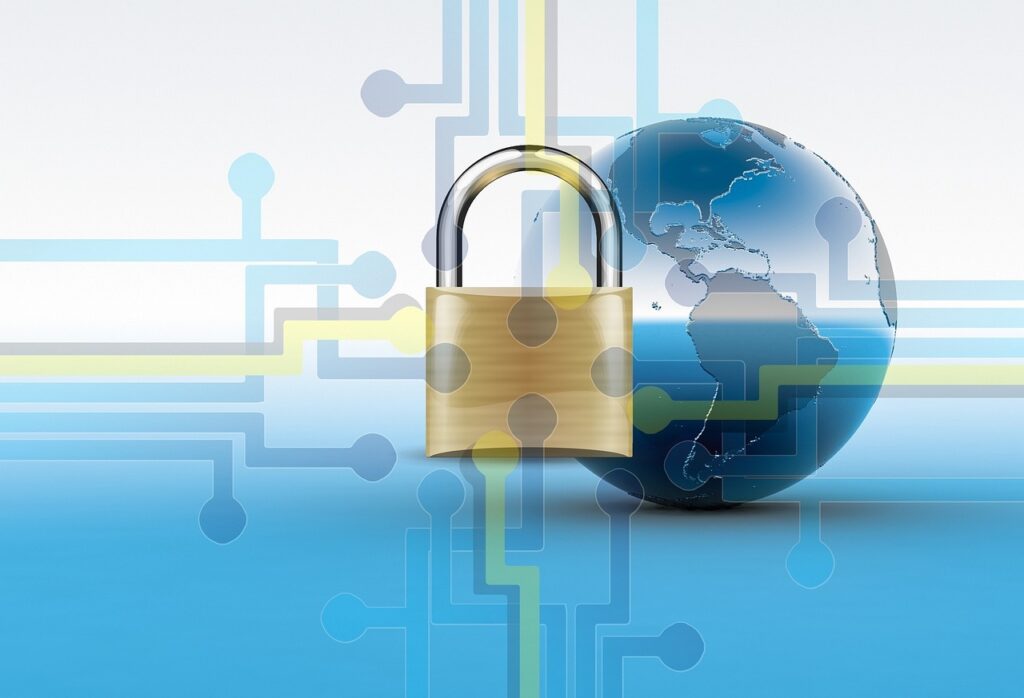Insider threats pose a complex and evolving risk to organizations across both public and private sectors, particularly in critical infrastructure. Effectively managing these risks requires a deep understanding of the issue. The Cybersecurity and Infrastructure Security Agency (CISA) defines insider threats as situations where individuals with authorized access—through either deliberate actions or unintentional mistakes—harm an organization’s mission, people, or resources. These threats manifest in various forms, including violence, espionage, sabotage, theft, and cyberattacks, making them a serious concern for businesses globally.
The cost of resolving insider threats is staggering. In 2023, the average annual cost of insider risk incidents surged to $16.2 million per organization, an increase from $15.4 million in 2022—a 40% rise over the past four years, according to a report by DTEX and the Ponemon Institute. Additionally, the report revealed a significant uptick in the number of insider incidents, rising from 6,803 in 2022 to 7,343 in 2023.
Although the time to contain these incidents remained stable—averaging 86 days in 2023 compared to 85 days the previous year—remediation comes at a steep price. Organizations spent an average of $179,209 on containment and $125,221 on remediation per incident. Unsurprisingly, costs escalate sharply the longer it takes to manage an insider threat. Companies that took more than 91 days to contain an incident saw their annual expenses exceed $18.33 million.
Who Counts as an Insider?
An insider can be anyone who currently or previously had access to an organization’s resources, including personnel, facilities, information, or systems. This group encompasses employees, contractors, vendors, and trusted third parties granted access to sensitive information or systems through their positions. Insiders often understand the organization’s internal workings, which might include business strategies, pricing models, and potential vulnerabilities. In government contexts, insiders may even have access to classified information that, if exposed, could jeopardize national security.
While it’s easy to picture insiders as a known group of employees or contractors, the reality is that insiders can include individuals you least expect. A disillusioned employee, a well-intentioned but careless staff member, or a third-party contractor—can all pose insider threats if they have access to sensitive areas of the organization.
What is an Insider Threat?
An insider threat occurs when someone exploits their knowledge or access to intentionally or unintentionally harm the organization. These actions can compromise the security, integrity, or availability of critical resources, leading to financial loss, operational disruptions, or reputational damage. CISA categorizes insider threats into several types, ranging from espionage and leaking sensitive information to workplace violence, corruption, and sabotage. These threats are further divided into intentional and unintentional threats, each presenting different risk profiles.
Types of Insider Threats
- Unintentional Threats: These arise from negligence or accidents. Negligent insiders might disregard security policies, such as allowing someone to tailgate through a secure entrance or failing to update software patches. Accidental threats could involve employees mistakenly sending sensitive information to the wrong recipient or falling victim to phishing attacks. Although these employees have no malicious intent, their actions can significantly undermine an organization’s security.
- Intentional Threats: Known as “malicious insiders,” these individuals deliberately seek to harm the organization. They may be motivated by personal gain, revenge, grievances, or external influences. Malicious insiders may steal sensitive data, sabotage operations, or exploit their access for financial benefits or to harm the organization.
- Collusive Threats: Collusion occurs when insiders collaborate with external actors, such as cybercriminals or rival companies, to commit fraud, steal intellectual property, or engage in espionage. This collaboration amplifies the threat posed by insiders, as it combines their knowledge of the organization’s vulnerabilities with the technical capabilities of external attackers.
- Third-Party Threats: Third-party vendors and contractors with access to the organization’s systems or facilities can also become insider threats, either intentionally or unintentionally. Organizations often overlook the risks posed by third-party insiders. Yet, vendors may not adhere to the same security standards as employees, making them a potential weak link in the security chain.
How Do Insider Threats Manifest?
Insider threats manifest in various ways, each carrying distinct consequences for organizations:
- Violence: This includes physical violence or creating a hostile work environment through threats, harassment, or bullying. In extreme cases, insiders may commit acts of workplace violence, putting employees and property at risk.
- Espionage: Insiders may engage in corporate or government espionage, stealing sensitive information for personal gain or on behalf of competitors or foreign governments. This could involve the theft of trade secrets, proprietary data, or confidential government information. The impact of espionage can be devastating, leading to the loss of intellectual property and competitive advantage.
- Sabotage: Insiders may deliberately damage physical infrastructure or disrupt digital systems. Physical sabotage might involve tampering with machinery or facilities, while digital sabotage could involve actions like deleting critical data, introducing malware, or otherwise disrupting operations.
- Theft: Insiders may steal money, intellectual property, or sensitive data. Financial theft can involve unauthorized use of company resources for personal benefit, while intellectual property theft can cause long-term damage by giving competitors access to proprietary information.
- Cyber Threats: Insider cyber threats may involve actions such as installing malware, exploiting system vulnerabilities, or launching cyberattacks from within the network. These attacks can severely compromise data security and operations, and they are often harder to detect due to the insider’s familiarity with internal systems.
Why Insider Threats Are So Dangerous
Insider threats can be more dangerous than external cyberattacks for several reasons:
- Access to Sensitive Information: Insiders often have legitimate access to highly sensitive data, making it easier for them to steal, leak, or misuse information without raising suspicion. Unlike external hackers who must bypass security defenses, insiders already hold the keys to the castle.
- Knowledge of IT Systems: Insiders understand how their company’s IT environment functions, allowing them to exploit system vulnerabilities and cover their tracks more effectively than external attackers.
- Unintentional Mistakes: Employees with no malicious intent can still cause significant harm through simple errors, such as falling for phishing attacks or misconfiguring a system. These mistakes can lead to data breaches or create opportunities for external attackers.
- Difficulty in Detection: Insider threats are notoriously hard to detect because organizations already trust their insiders. Their actions often blend with regular activity, making it challenging to distinguish between normal and malicious behavior.
Malicious Insiders: A Costly and Intentional Threat
While most insider incidents stem from negligence or human error, malicious insiders represent a more targeted and costly threat. Unlike non-malicious insiders, who may compromise security unintentionally, malicious insiders actively seek to harm their organization. They are typically driven by personal gain or grievances and engage in harmful activities such as intellectual property theft, unauthorized disclosure of sensitive information, sabotage, and fraud.
According to a report surveying over 1,000 security and IT professionals, malicious insiders accounted for 25% of insider incidents. However, these incidents proved to be far more damaging than those involving unintentional actions. The average cost of responding to a malicious insider incident is a staggering $701,500—substantially higher than the $505,113 average cost associated with unintentional insider incidents.
Malicious insiders are particularly dangerous because of their deliberate intent. They possess detailed knowledge of their organization’s vulnerabilities, systems, and critical resources, allowing them to exploit weaknesses to maximize damage or evade detection. Their actions can lead to severe financial, operational, and reputational harm.
Despite comprising a smaller percentage of overall insider incidents, the long-term impact of malicious insiders can be devastating. Intellectual property theft and unauthorized disclosures not only result in immediate financial losses but can also compromise an organization’s competitive edge and damage client relationships.
The high costs associated with malicious insider threats stem from the complexity of their actions and the time it often takes to detect, contain, and mitigate the damage they cause. Organizations that take longer to respond—exceeding 91 days—may face annual costs exceeding $18.33 million, underscoring the urgency of addressing these risks effectively. By prioritizing monitoring and detection measures, such as deploying Data Loss Prevention (DLP) tools and conducting regular security audits, companies can better protect themselves from the costly repercussions of malicious insider activity.
Real-World Consequences of Insider Threats
The consequences of insider threats extend beyond financial losses. Insider incidents can lead to:
- Compliance Breaches: Insider threats regularly result in compliance violations, leading to hefty fines from regulatory bodies. Organizations must comply with regulations like GDPR, HIPAA, and SOX, and a data breach caused by an insider can incur significant penalties.
- Reputational Damage: Trust is crucial in business, and a high-profile insider breach can severely harm a company’s reputation. Customers, partners, and investors may lose confidence in the organization’s ability to protect sensitive data, resulting in lost business and decreased market value.
- Financial Loss: Insider threats can lead to substantial financial ramifications, whether due to theft of intellectual property, fraud, or fines related to compliance breaches.
How to Prevent Insider Threats
While preventing insider threats entirely is challenging, organizations can take several proactive measures to mitigate risk. Here are some best practices to safeguard against internal fraud and human error:
- Develop a Data Handling Policy: Creating a clear data handling policy is crucial for ensuring employees understand how to manage sensitive information securely. This policy should include guidelines on data sharing, access permissions, and acceptable use of company resources.
- Implement User Activity Monitoring: Organizations should deploy user activity monitoring tools to track user behavior and identify anomalies. This allows for the early detection of potential insider threats.
- Conduct Regular Security Training: Offering regular training sessions on cybersecurity best practices can help employees understand the importance of security and their role in protecting sensitive information. By raising awareness about phishing, social engineering, and proper data handling, organizations can reduce unintentional insider threats.
- Establish an Insider Threat Program: Developing a comprehensive insider threat program that includes clear policies, monitoring practices, and incident response procedures is essential for managing insider risks effectively. This program should include a designated insider threat team responsible for identifying, assessing, and addressing potential threats.
- Promote a Positive Workplace Culture: Encouraging open communication and a positive workplace culture can mitigate the risk of insider threats. Employees who feel valued and engaged are less likely to harbor grievances that could lead to malicious actions. Providing avenues for reporting concerns anonymously can also help organizations address potential threats before they escalate.
Conclusion
Investing in security training, monitoring systems, and a positive workplace culture can create an environment where employees feel empowered to contribute to the organization’s security. Ultimately, defending against insider threats requires a comprehensive approach that encompasses awareness, vigilance, and a commitment to continuous improvement.
Insider threats represent a complex and multi-faceted challenge for organizations today. From human error to deliberate malice, these threats can have significant implications for financial, operational, and reputational health. By understanding the nature of insider threats and implementing proactive measures to mitigate risks, organizations can better protect themselves from internal fraud and human error.


